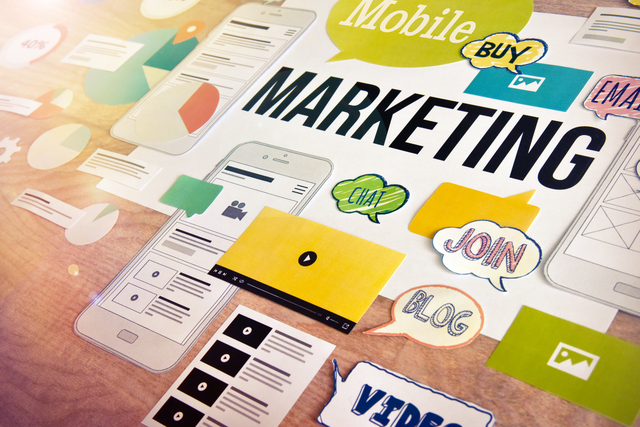While writing this blog, I was repeatedly hit by one big question — are brand and growth really that different?
And I couldn’t help but remember a quote I read sometime back about brand and growth marketing which took me back to my Science days.
Brand Marketing increases the potential energy for revenue. It prepares your users to convert at a higher rate in future.Growth Marketing converts that potential energy into kinetic energy. It hastens the purchases.
I really love this statement, and my version of decoding this statement will be your key takeaway from this piece. The biggest of them being the role of digital in both brand and growth marketing.
The modern marketer has to understand how to employ both growth marketing and brand marketing techniques in tandem to bring the best possible return.
In fact, growth marketing to some degree depends on brand marketing.
Let’s take an example.
Imagine being on a ship to go from A to B. What does the ship need to cover the distance? Propellers below the ship and wind behind the sail. While your propellers will work to push you ahead, it is the wind that determines how much time you will take to reach. The ship’s propellers are your growth marketers and the wind is the brand.
That leads us to something both brand and growth marketing strategies have in common, and one reason it makes sense to use both strategies together: their success is measured in the medium to long term. And to that end, successful growth and brand marketing strategies both require and reward commitment and consistency.
Now before we get to the “Digital” bit, let’s take a moment to clearly differentiate Brand and Growth marketing.
Brand Marketing
Brand marketing is focused on boosting and establishing a company’s brand and its promise. In simple terms, the process begins by identifying your brand and primarily boils down to asking yourself 3 questions –
- Who is your target audience? What do they need?
- How is your company different from the competition?
- What is your brand’s personality and brand statement?
The ultimate goal of brand marketing is to boost awareness, visibility, and recognition of your brand while creating clearly defined and positive emotional associations between your brand and your consumers.

Consider how we associate Apple with innovation, ease of use and clean design, or how Nike will always be linked to sweat, hard work and determination. That is the power of the brand.
The biggest takeaway that your product or service can have from brand campaigns will be — pushing it into the consideration set of your prospective clients or customers.
In other words, brand marketing is less about pushing a specific product or promotion and more about telling your story in a way that resonates.
Establishing a brand as rock-solid as those mentioned won’t happen unless marketers stick to several principles:
Consistency: To really take home the story of your brand, your marketing efforts need to be consistent — in terms of messaging, voice, and visual aesthetics — across all platforms,
Emotion: We aren’t just loyal to certain companies or brands because we like their products — often, our buying decisions are tied to our sense of identity and the perceived values of the companies making those products.
Delivery: Trust is an essential element in building a powerful brand, so be sure that your marketing aligns with what you’re actually giving your customers.
Growth Marketing
Growth marketing is concerned with the entire funnel, where the goal is revenue growth not merely through bringing in new customers but also through the activation, retention, referral, and monetization of the customers you already have.
In fact, there is another quote by Mike Volpe that I love and relate to when it comes to growth –
Growth marketing is removing the boundaries of marketing to enable every aspect of the customer experience to focus on attracting more engaged customers Unlike the more traditional brand marketing, growth marketing is a data-driven process.
It’s experimental, iterative, and — most importantly — user-focused since growth marketing is far more concerned with customer lifetime value (CLTV) and customer retention than simple customer acquisition.

Think about some of the best growth examples in recent times.
Dropbox turning its users into mobile marketers by incentivizing referrals with free storage. Pinterest creating an air of exclusivity by requiring members to request an invitation to join. In fact, even flash sales to an extent that is a part of most mobile phone launches nowadays.
Digital Marketing
Digital is quite a buzzword today. A lot of people want to use it, a lot of people use it too, but not many know how to or if we take a step back, why to?
The best use of Digital Marketing is to bridge the gap between products and customers. You get to hear from your customers directly here, unlike other media. Digital marketing gets the leads, makes relationships with customers and gets the connections to create a brand name a household name.
Digital Marketing is done in many ways, but there are some techniques used to spread the wings all over the internet to promote a brand, and they are:
- Social Media Marketing
- Content Marketing
- Email Marketing
- Affiliate Marketing
- Influencer Marketing
- Moment Marketing
- Search Engine Marketing
- SEO
- Retargeting and Remarketing
And I could go on and on.
Just think about this scenario: You are lying on your sofa and thinking about buying a new Phone for your dad and bam, you got your mobile phone in your hand and start searching for the best phone you can get online. It is the magic of digital marketing that a customer receives his/her desired products at once, and the business gets its customer at the same time.
Now the biggest challenge comes when you plug your digital strategy into brand and growth.
The first and probably the most important thing that a lot of marketers miss while doing this is identifying the success metrics for yourself.
What do you consider a success for a brand campaign? Or what does success look like for a growth campaign?
Let’s go deeper!
For a brand campaign, typically we drive these KPIs –
- Impression share and CPM or CPI
- Growth in organic search for the brand
- Growth in direct traffic — to website (new and old visitors)
- Increase in average session time and page views on website with low bounce rate
- Incremental referral traffic
- Earned media value
- Share of voice
- Backlink success
- Social media engagement as a percentage of impressions
Now if we want to achieve a healthy mix of high impression share, engagement on social media and growth in website visits what do we need to do on digital media?
- Identify the media in terms of your social strategy with your audience set — This could be Instagram / Facebook or LinkedIn if you are a B2B brand
- Design a crisp messaging and communication
- Make the story look real
- Use paid marketing effectively — with a broad TG and engagement first approach
- Launch
Give yourself 3 months period to analyze what is right and what went wrong. Recalibrate and launch again!
Use strategic giveaways that increase your brand connect and engagement. Tweet chats is a great example of this.
Closer to my experience I remember being a part of brand campaign for Vodafone where ZooZoos were being brought back into action. The value proposition was the MyVodafone App and we created a messaging highlighting the strongest features of the app, weaved into a story with zoozoos. The campaign was a great brand success with an excellent spike in website visits and organic searches for the brand.
The best thing about digital is that it is iterative! And that is the essence of growth marketing. Therefore, these factors that you track change when you talk about Growth Marketing.
- Cost per Lead
- Conversion Rate (or Goal Completion Rate)
- Cost per conversion
- CTR or Click through rate
- Incremental Sales
- Purchase Funnel — increase in percentage movement from one part of funnel to other
- Customer Lifetime Value
- Return on Investment (ROI)
Now if we want to achieve a healthy mix of leads, impressions, funnel optimization & what all do we need to do on digital?
- Identify the precise audience set you want to go after. While brand marketing is about carpet bombing, growth marketing is about sharp shooting
- Design a compelling message with a clear Call to Action
- Mark out the value prop clearly depending on the funnel position of your prospect
- Effective paid marketing with precise TG set
- Launch. Iterate. Correct. Relaunch
The key difference between brand and growth is that growth marketing is highly iterative where the scope of ‘learn, rehash and reiterate’ is immense.
One of the best growth marketing campaigns I was a part of was the activation of the Aon brand in the South-East Asia market. The challenge was to influence all parts of sales funnel to go with incremental top of the funnel activity. We built a solid proposition for the market, clear CTA, and used LinkedIn as our Growth Channel. Within 6 months, we could see a movement in the funnel and dollars coming into the business. Nothing works like a good growth plan!
Another one that comes to my head was again for the MyVodafone App. The goal was to increase the customer base by 30% in a month on the app. We designed a unique campaign with the Pug as a central figure and asked customers to look for the pug on the app. Each day a lucky user was rewarded with an iPhone. 30 days in, we were looking at a 35% increase in users with a 20% increase in overall revenues.
So the next time you are thinking of a long-term marketing strategy for your product or service, make sure you get a healthy mix of both Brand and Growth flavors as one without the other will make sure you are not firing on all cylinders.
Conclusion
Brand Marketing increases the potential energy for revenue. It prepares your users to convert at a higher rate in the future. Growth Marketing converts that potential energy into kinetic. It hastens the purchases. For a successful marketing calendar, you need a healthy mix of brand and growth marketing efforts.
Each of the two work on same underlying principles but moves different metrics — if you are looking at incremental awareness you need to drive more visits to your website or see incremental growth in organic search of your brand as success metrics. And that is where a good brand marketing strategy and storytelling needs to be in place
If on the other hand you are looking at incremental sales as an immediate result, with an increase in customer lifetime value and lead or demand generation, growth marketing strategy needs to be in place — with incremental leads and conversions being your north star metric.
If these two hold hands and work together, that is where the magic happens. But maybe that is for another day.



